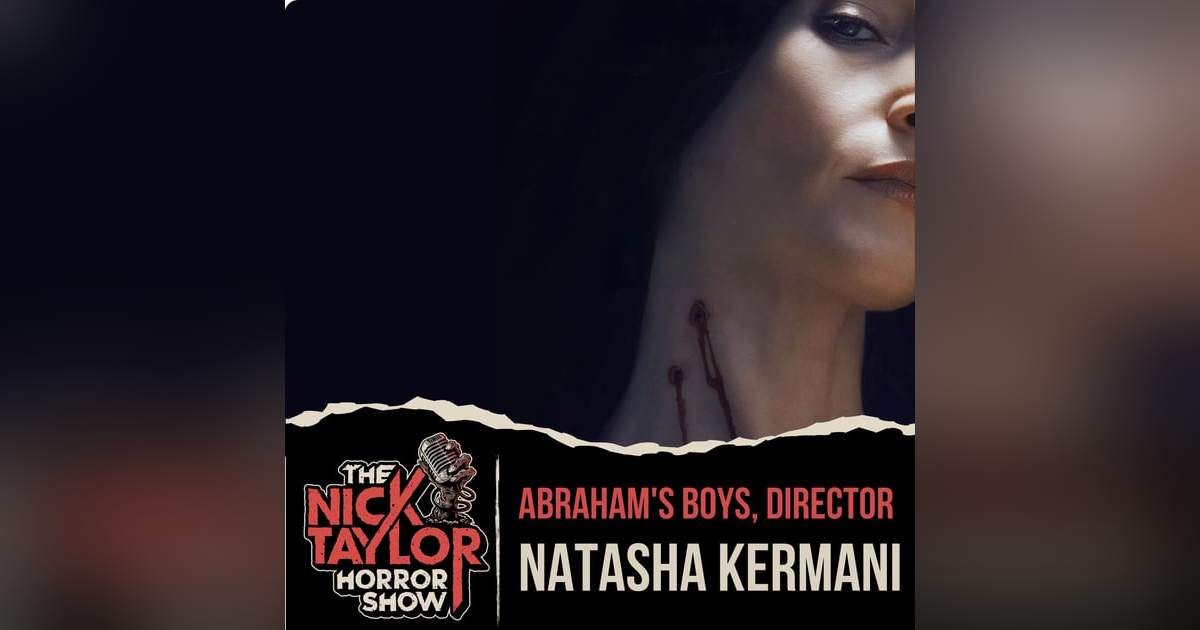ABRAHAM’S BOYS Director, Natasha Kermani

Natasha Kermani is a director whose work includes Imitation Girl, Lucky, and V/H/S/85. Her latest feature, Abraham’s Boys, is an atmospheric, emotionally grounded take on Dracula and Van Helsing, adapted from Joe Hill’s short story.
The film explores the lives of Van Helsing’s sons, reframing familiar gothic mythologies through a new lens and examining the cost of obsession, legacy, and belief systems passed from parent to child. Abraham’s Boys blends Western aesthetics, intimate drama, and horror mythology to create something quietly powerful — and wholly its own. Available to rent on VOD and coming soon to Shudder.
In this episode, Natasha dives deep into the making of the film — from crafting a new visual language with her longtime DP Julia Swain, to working with horses and period locations, to adapting well-known material without undermining its origins. She also discusses the unpredictable nature of building a directing career, the importance of collaboration, and what it means to make films that ask questions instead of offering easy answers.
On today’s episode of The Nick Taylor Horror Show, here — without further ado — is Natasha Kermani.
Key Takeaways
LA is the New LA.
While many productions chase tax incentives out of state or overseas, Natasha shot Abraham’s Boys in California—and reaped the benefits. An experienced LA crew made traditionally tricky elements—horses, children, and stunts—run smoothly. Her stunt coordinator even lived nearby on a ranch, with a horse-wrangler wife ready to step in. Local crews weren’t learning on the job; they brought deep expertise, period-accurate resources, and an efficient workflow that protected high-risk days. In a time when LA has been nearly abandoned for cheaper pastures, the city’s seasoned talent pool has become a niche advantage for those who stay.
Test, Test, Test — Early and with Your Actual Actors.
Natasha didn’t just test lenses in a vacuum—she brought one of her lead actresses in costume for full camera tests. Seeing the lead actor’s face under various lighting setups, with period wardrobe and the chosen LUTs, gave a true preview of the film’s look. The process revealed not just what worked, but what didn’t, allowing for informed, confident decisions before day one of shooting. Testing with real elements—actors, costumes, lighting—ensures you’re dialing in the visuals of your movie, not a theoretical version of it.
Prioritize Mental Health and Self-Kindness.
Natasha reminds filmmakers that this industry is uniquely high-stakes, unpredictable, and expensive—and that sustaining creativity under those conditions is exhausting. Her advice: extend the same grace to yourself that you show others. Hustle culture can make rest feel like indulgence, but in a business this volatile, breaks and self-care aren’t luxuries—they’re survival tools. Replenishing your energy isn’t stepping back from your career; it’s what allows you to keep pushing it forward.
Show Notes
Movies Discussed
- Abraham’s Boys
- Imitation Girl
- Lucky
- V/H/S/85
- Dracula (1931)
- Bram Stoker’s Dracula (1992)
- Annabelle: Creation
- Deadwood
- Bosch
Books & Stories
- 20th Century Ghosts by Joe Hill
- Dracula by Bram Stoker
People & Resources
- Joe Hill (author)
- Julia Swain (DP)
- Jessie Rowland (AD)
- Dalton Simmons (stunt coordinator)
- Tim Wu (producer)
- Travis Tips (DP of Imitation Girl)
Locations
- Big Sky Movie Ranch (Simi Valley, CA)
- Monrovia, CA







